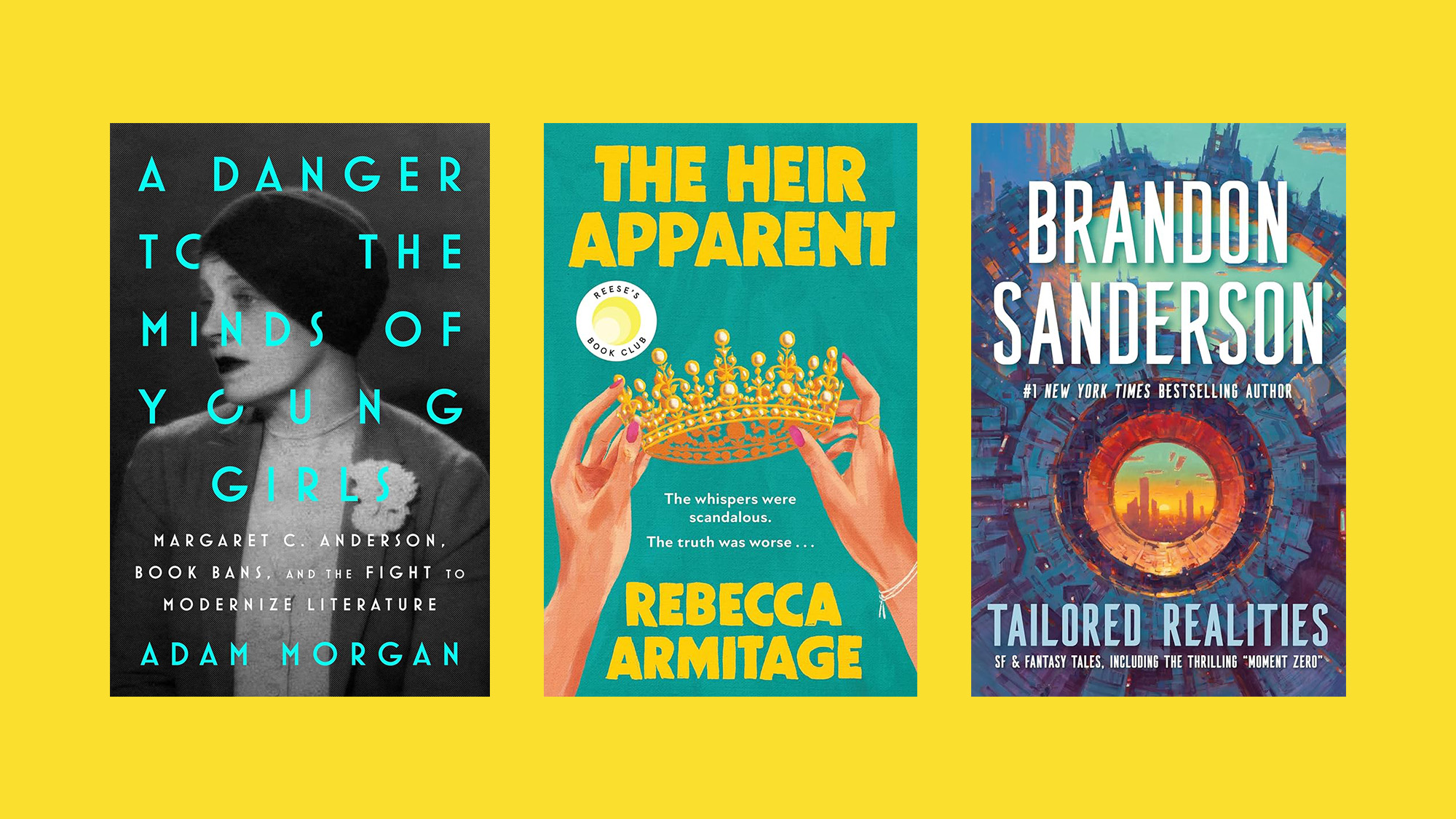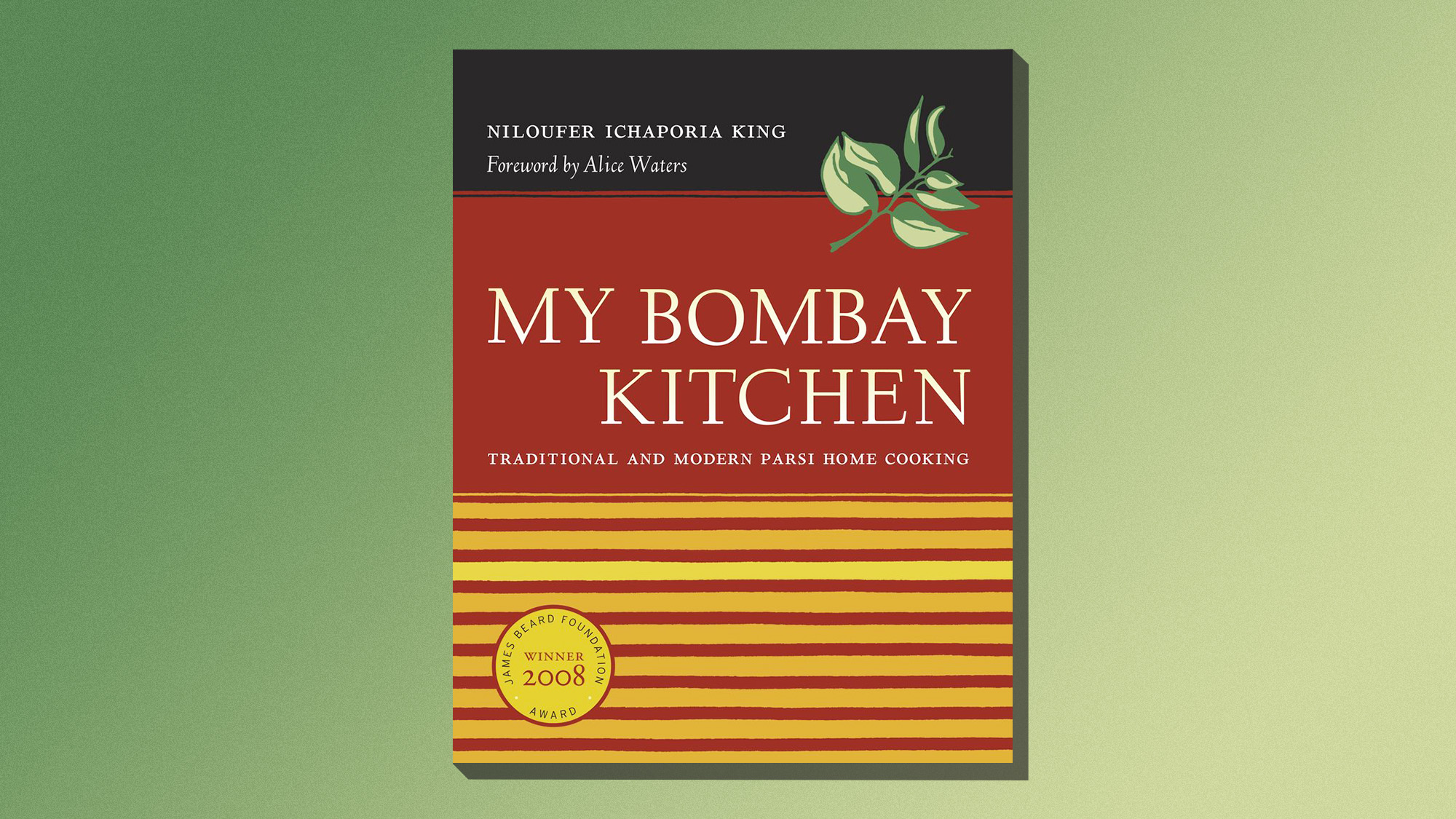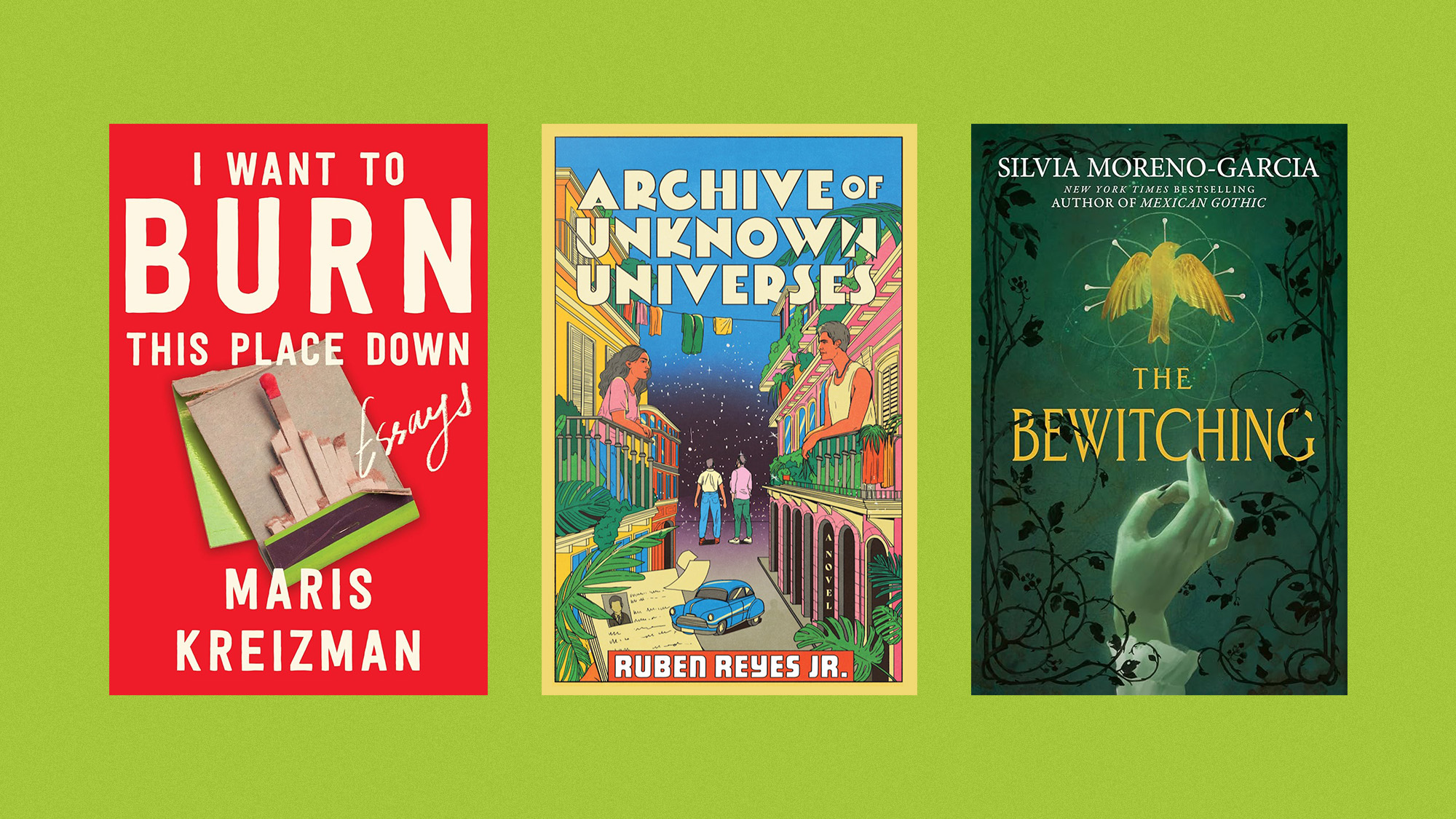10 books to read in honor of National Hispanic Heritage Month
A comic book with an authentically Latinx superhero, the story of real-life Dominican poet, and more


National Hispanic Heritage Month has officially kicked off. Every year from Sept. 15 to Oct. 15, the U.S. pays tribute to the cultural and historical achievements of Hispanic American citizens whose ancestors hail from Spain, Mexico, the Caribbean, and Central and South America.
As a young Afro-Dominicana, I was greatly inspired by the work of authors like Sandra Cisneros and Julia Alvarez because they carefully crafted beautiful representations of Hispanic culture and history. In light of ongoing culture wars being waged in libraries across the country, National Hispanic Heritage Month is a perfect time to celebrate why representation matters.
Here are my top 10 books by Latinx authors that you can read in honor of National Hispanic Heritage Month:
The Week
Escape your echo chamber. Get the facts behind the news, plus analysis from multiple perspectives.

Sign up for The Week's Free Newsletters
From our morning news briefing to a weekly Good News Newsletter, get the best of The Week delivered directly to your inbox.
From our morning news briefing to a weekly Good News Newsletter, get the best of The Week delivered directly to your inbox.
"Sana Sana," by Ariana Brown (2020)
After spending a decade as a spoken word performer, Ariana Brown published this collection of poems as an ode to her experiences as an LGBTQ Afro-Mexican girl growing up in America. The title, Sana Sana, comes from the healing rhyme popular with abuelas everywhere: "Sana Sana, colita de rana, si no sana hoy, sana en la mañana" — meaning "heal, heal, little tail of the frog, if you don't heal today, you'll heal tomorrow." In this vivid collection, Brown aims to heal wounds while exploring themes such as "Black girlhood, the possibilities of queerness, finding your people, and trying to survive capitalism."
"Night-blooming Jasmin(n)e: Personal Essays and Poetry," by Jasminne Mendez (2018)
In her hybrid memoir Night-blooming Jasmin(n)e: Personal Essays and Poetry, Jasminne Mendez presents a collection of poems and essays that give readers insight into her experiences dealing with multiple chronic illnesses as an Afro-Latina. Mendez delves into battling her Dominican parents for autonomy, living with distressing medical conditions, grieving after a miscarriage, and finding hope despite her troubles. She details her path from childhood to her departure from her dream job to pursue creative fulfillment. The bilingual creative nonfiction collection is a powerful indictment of racist microaggressions in the medical field and within her community.
"This Thing Between Us," by Gus Moreno (2021)
Right in time for spooky season, This Thing Between Us — a debut horror novel by Gus Moreno — weaves together the fear of technology, grief, and Mexican folklore. The book follows Thiago, his wife Vera, and their sinister voice-controlled smart assistant named Itza. If you've ever wondered what would happen if Alexa or Siri got possessed by a malevolent force, this book will give you a peek into the potential horrors you'd face. The characters juggle grief, issues stemming from undocumented immigration, zombie pets, and strange packages arriving that they never ordered. NPR warns that the "unrelenting creepiness" will make you uncomfortable in the best ways as it explores how grief taints our perception of reality.
"The Last Karankawas," by Kimberly Garza (2022)
Amazon calls "The Last Karankawas" by Kimberly Garza a "blazing and kaleidoscopic debut about a tight-knit community of Mexican and Filipino Americans." Set in the town of Galveston, Texas, in 2008, the book begins as the multi-cultural community is preparing for Hurricane Ike to slam the Gulf Coast. The main character, Carly Castillo, ponders life outside of Fish Village and away from her family. Her grandmother says they are descendants of an extinct local indigenous tribe called the Karankawas, but Carly dreams about a life that isn't defined by her family's history. With the storm threatening to batter their homes, Carly and the rest of her community are faced with important decisions: board up their windows or flee.
A free daily email with the biggest news stories of the day – and the best features from TheWeek.com
"Clap When You Land," by Elizabeth Acevado (2020)
National Book Award-winning and New York Times bestselling author Elizabeth Acevedo of The Poet X wrote Clap When You Land to discuss losing loved ones, forgiveness, and the familial bonds that shape our lives. The protagonist, Camino Rios, spends her summers living in the Dominican Republic. This time when she arrives, her father doesn't come to greet her. Instead, she is met by a crowd of crying family members with the news that her father has passed away in a plane crash. Meanwhile, Yahaira Rios receives the news that her father has died from her mom in New York City. The two sisters navigate grief separately due to distance and their father's secrets. As they deal with the reality of their new lives, they learn about each other amid all this loss. The book is a poignant tale of grief and the legacy of hurtful family secrets.
"Of Women and Salt," by Gabriela Garcia (2021)
Of Women and Salt explores how women are often put in the difficult position of taking the lead during political unrest and familial trauma. The main character Jeannette deals with the painful legacy of the effects of patriarchal oppression while navigating the injustices of the American immigration system. While battling addiction in Miami, Jeannette, the daughter of a Cuban immigrant, decides to offer shelter to the child of a neighbor who has been detained by ICE. Her mother, Carmen, deals with her own traumatic experiences with displacement while struggling to raise Jeannette. In the present, Jeannette decides to go to Cuba to learn more about her family history and the mysteries of the nation from her grandmother.
"How Not to Drown in a Glass of Water," by Angie Cruz (2022)
The author of Dominicana, Angie Cruz, wrote the profoundly moving novel How Not to Drown in a Glass of Water. Amazon calls the book "structurally inventive and emotionally kaleidoscopic." Set during the Great Recession of 2008, the main character, Cara Romero, struggles with unemployment after losing her job at a lamp factory. Despite being in her mid-50s, Cara goes to a job counselor to find work. What follows are 12 therapeutic sessions of Cara recounting the story of her life, during which she confronts her struggles with debt, love, and being estranged from her son. Interspersed with the narrative are documents, like an eviction notice, that add more detail to Cara's story.
"In the Name of Salomé," by Julia Alvarez (2001)
As a massive fan of the work of Julia Alvarez, I could add any of her books to this list, but In the Name of Salomé is my favorite. Alvarez did a beautiful job animating the story of real-life Dominican poet Salomé Ureña, who she calls the "Emily Dickinson of the Dominican Republic." Beginning in the 1850s amid political unrest, Salomé becomes an iconic fixture with her patriotic poems that challenge the oppressive government. The story also recounts the life of her daughter, Camila, who lives in exile in America before deciding to join the revolution in Cuba at 66 years old. The story spans over a century and brings the complicated history of these Caribbean nations to life.
"La Boriqueña," by Edgardo Miranda-Rodriguez (2016)
No need to fret, comic book fans! I've got something for you as well. Edgardo Miranda-Rodriguez's graphic novel La Boriqueña is a beautiful collaboration between indigenous Puerto Rican culture and superhero tropes. Brooklynite Marisol Rios De La Cruz discovers a mystical object that introduces her to ancient Taino deities while studying abroad in Puerto Rico. She is bestowed with abilities to help her fulfill her new destiny — being the protector of La Isla del Encanto. Now she is La Borinqueña, battling villains, environmental issues, and economic challenges to uplift Puerto Rico. This graphic novel is a gift for those of us craving a chance to see an authentically Latinx superhero.
"The Inheritance of Orquídea Divina," by Zoraida Córdova (2021)
Author of the Brooklyn Brujas series, Zoraida Córdova, has a new book out called The Inheritance of Orquídea Divina, which tells the story of an Ecuadorian family attempting to rediscover the magic behind their secret inheritance. This book is an excellent choice for fans of fantasy fiction: The Montoyas have never questioned how things seem just to appear when needed, or why their matriarch, Orquídea Divina, never leaves their home. When Orquídea invites the family to her funeral, they hope she will reveal the secrets behind her powers. Instead, she transforms into a tree, leaving the family to grapple with new abilities and no answers. They travel to their native Ecuador, hoping to find the answers she took with her to the grave.
Theara Coleman has worked as a staff writer at The Week since September 2022. She frequently writes about technology, education, literature and general news. She was previously a contributing writer and assistant editor at Honeysuckle Magazine, where she covered racial politics and cannabis industry news.
-
 Can Mike Johnson keep his job?
Can Mike Johnson keep his job?Today's Big Question GOP women come after the House leader
-
 A postapocalyptic trip to Sin City, a peek inside Taylor Swift’s “Eras” tour, and an explicit hockey romance in December TV
A postapocalyptic trip to Sin City, a peek inside Taylor Swift’s “Eras” tour, and an explicit hockey romance in December TVthe week recommends This month’s new television releases include ‘Fallout,’ ‘Taylor Swift: The End Of An Era’ and ‘Heated Rivalry’
-
 ‘These accounts clearly are designed as a capitalist alternative’
‘These accounts clearly are designed as a capitalist alternative’Instant Opinion Opinion, comment and editorials of the day
-
 December’s books feature otherworldly tales, a literary icon’s life story and an adult royal romp
December’s books feature otherworldly tales, a literary icon’s life story and an adult royal rompThe Week Recommends This month's new releases include ‘The Heir Apparent’ by Rebecca Armitage and ‘Tailored Realities’ by Brandon Sanderson
-
 Margaret Atwood’s memoir, intergenerational trauma and the fight to make spousal rape a crime: Welcome to November books
Margaret Atwood’s memoir, intergenerational trauma and the fight to make spousal rape a crime: Welcome to November booksThe Week Recommends This month's new releases include ‘Book of Lives: A Memoir of Sorts’ by Margaret Atwood, ‘Cursed Daughters’ by Oyinkan Braithwaite and 'Without Consent' by Sarah Weinman
-
 One great cookbook: Niloufer Ichaporia King’s ‘My Bombay Kitchen’
One great cookbook: Niloufer Ichaporia King’s ‘My Bombay Kitchen’The Week Recommends A personal, scholarly wander through a singular cuisine
-
 One great cookbook: Camilla Wynne's 'Jam Bake'
One great cookbook: Camilla Wynne's 'Jam Bake'The Week Recommends A guide to pristine jam-making, plus the baked goods that love them
-
 A descent into academic hell, a ferocious feminist fable and the adult debut of a beloved children's author
A descent into academic hell, a ferocious feminist fable and the adult debut of a beloved children's authorThe Week Recommends August books include R.F. Kuang's 'Katabasis,' Xenobe Purvis' 'The Hounding' and Louis Sachar's 'The Magician of Tiger Castle'
-
 Libraries are feeling the cost burden of e-book popularity
Libraries are feeling the cost burden of e-book popularityUnder the Radar Certain states are working to change laws around e-book purchasing for libraries
-
 5 dreamy books to dive into this July
5 dreamy books to dive into this JulyThe Week Recommends A 'politically charged' collection of essays, historical fiction goes sci-fi and more
-
 6 smart, surprising food books to drag you through the summer months
6 smart, surprising food books to drag you through the summer monthsThe Week Recommends BBQ and why we consume the way we do are just two of the tackled topics
